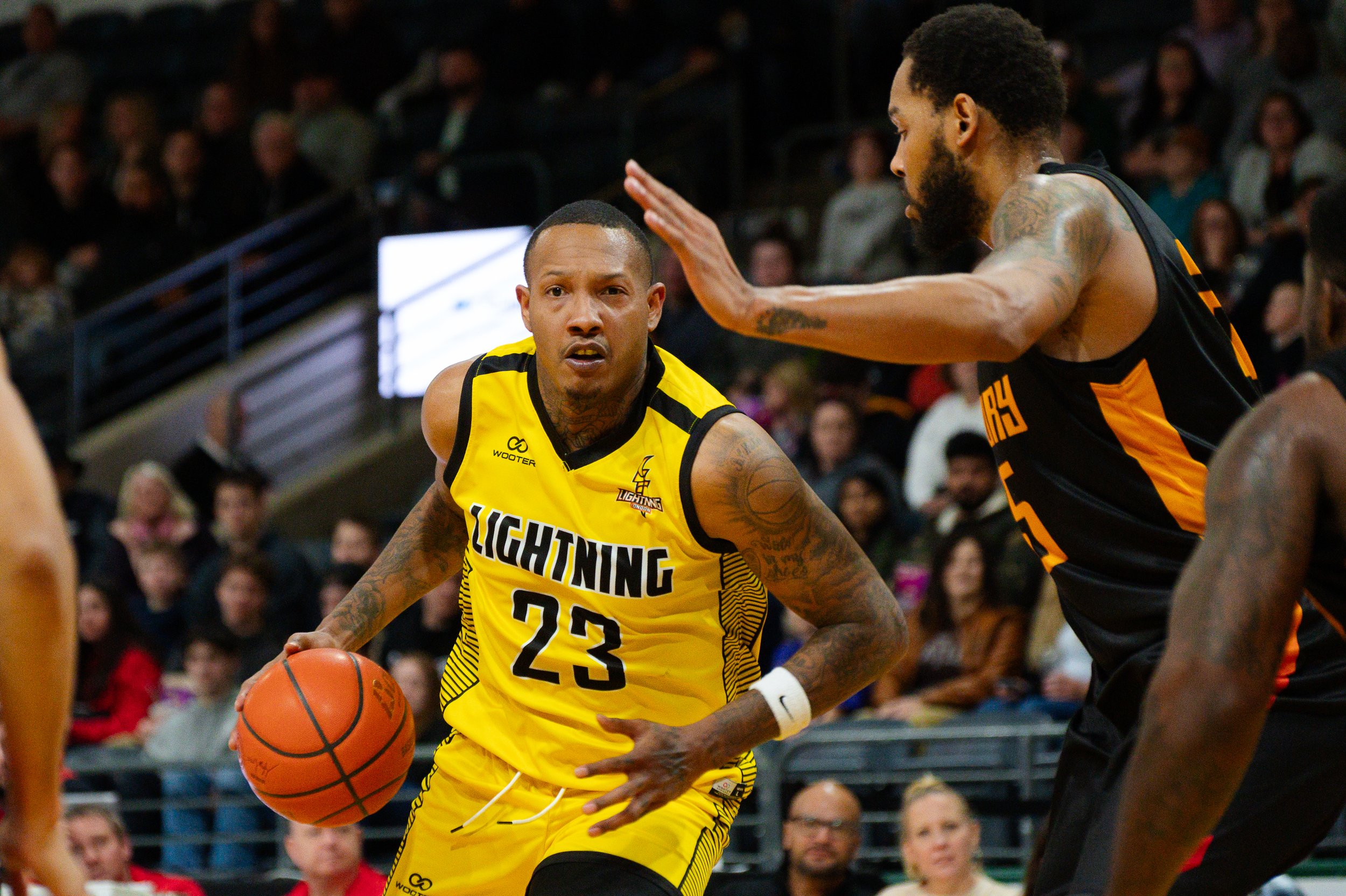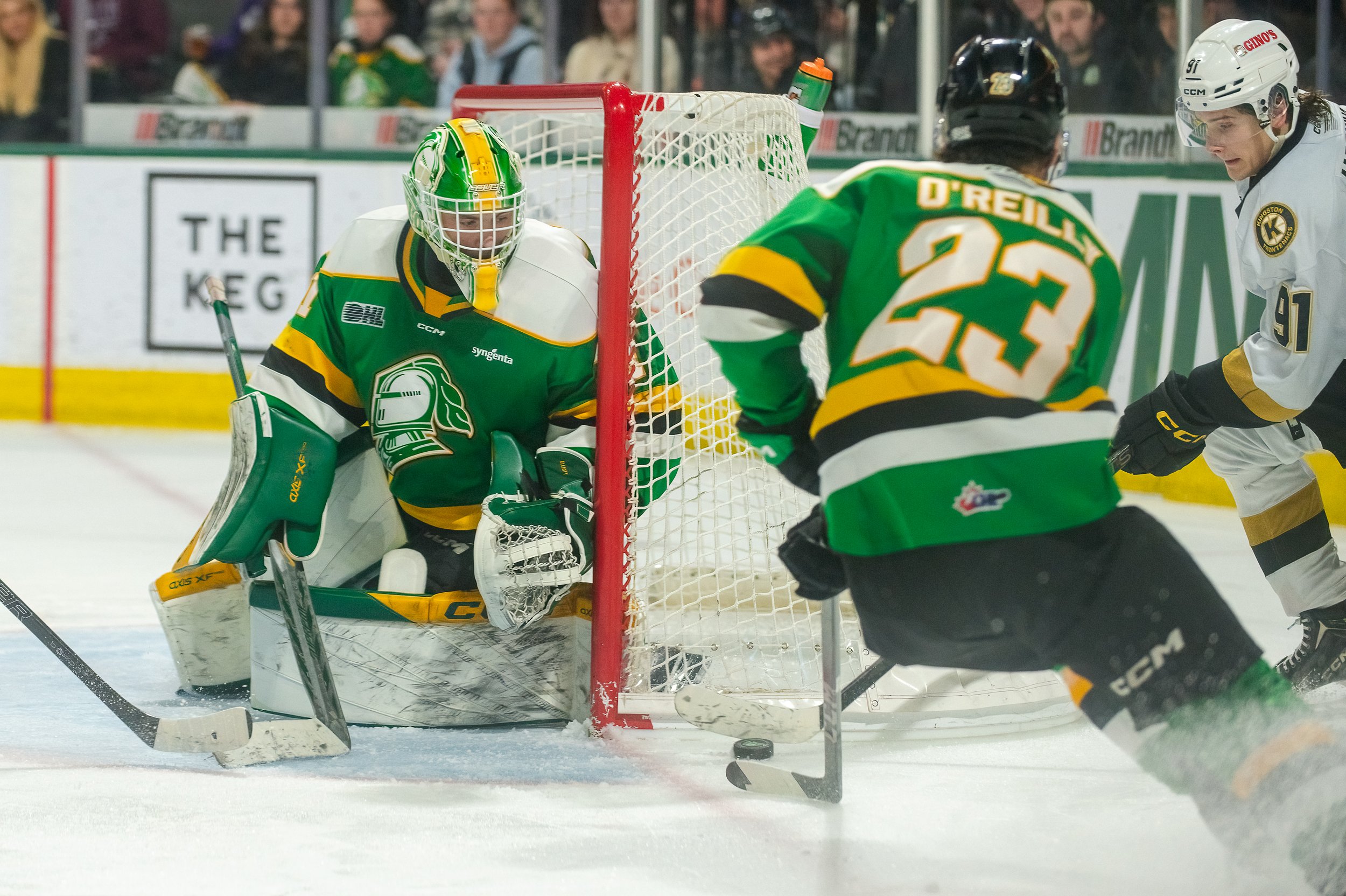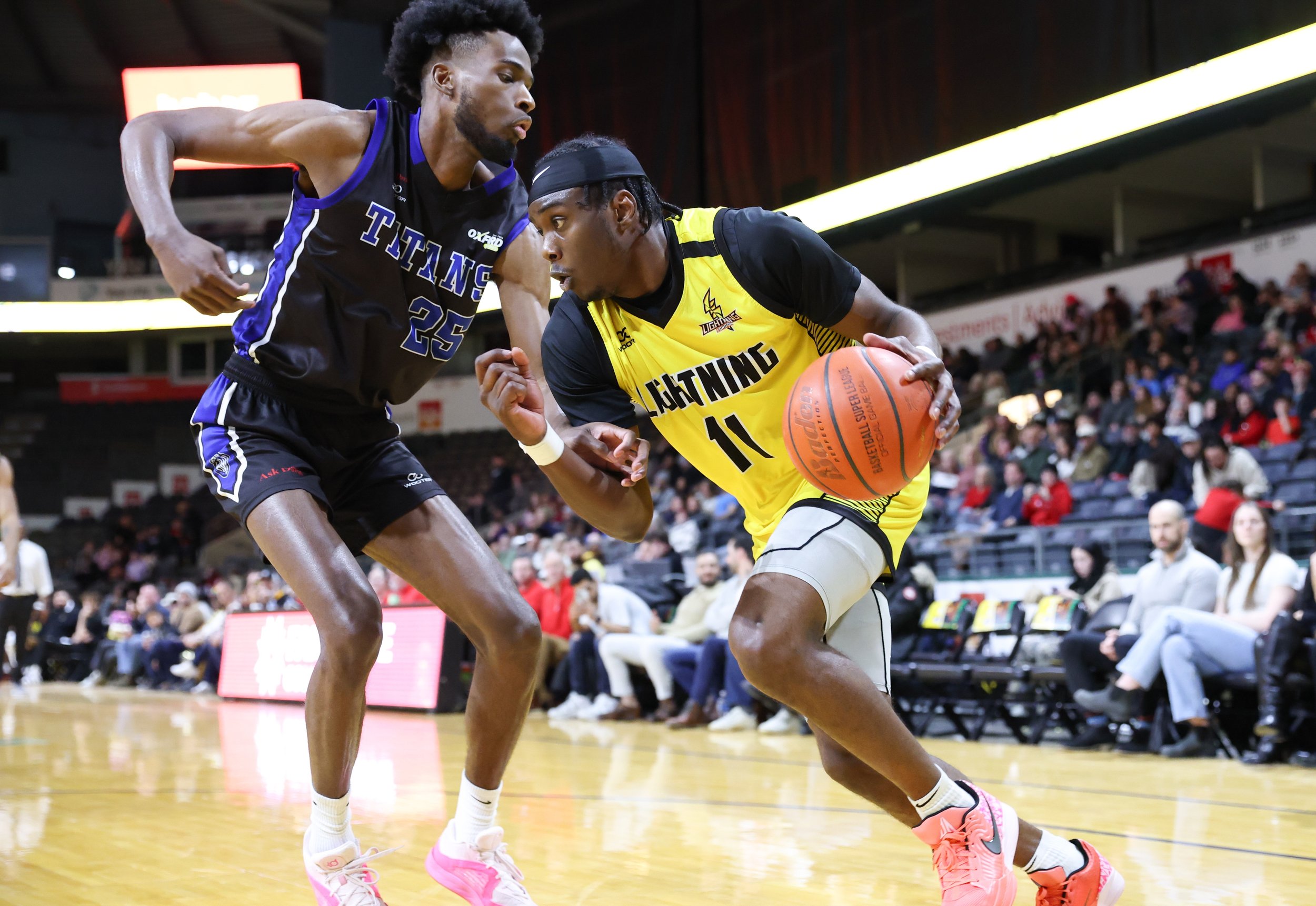NBLC looking to expand — in a big way
The NBL of Canada, which operated with four Ontario teams this year (and a cross-border partnership with The Basketball League), will add two teams next season while eyeing upwards of 20 teams in the coming years.
(Photo: Matt Hiscox Photography).
* * *
Days after the London Lightning wrapped up its fifth title, the NBL Canada is already moving beyond its 10th anniversary season and establishing plans that will see the league rapidly expand its reach both across the country and south of the border over the next decade, NBL Canada Board of Directors announced this week.
“When we came out the other side of the pandemic, we were not the same league. We faced new challenges – and saw some new opportunities,” explained Audley Stephenson, NBL Canada Commissioner.
“Now is the time to put the pedal to the metal, operate at a pace we never have, and make up for some lost time. We have a plan in place to help us do that, and not only pick up where we left off, but take us even further.”
The Lightning are the last of the league’s Original Seven, and London remains the only one of those markets to still support a team. In 2022, the NBL Canada was comprised of four Ontario-based teams playing a 24-game schedule that included competition against eight teams from the U.S.-based The Basketball League (TBL). London’s regular season schedule, for instance, saw it travel to Albany, N.Y., Lansing, Mich., and Flint, Mich., while also playing host to Syracuse, N.Y.
All that, however, looks to change as the league heads into its second decade.
“There are lots of markets that could support an NBL Canada team. There are lots of opportunities for lots of cities and for us,” Stephenson said. In Ontario alone, for example, 18 Ontario cities are home to an OHL franchise. Only four of those cities have NBL Canada franchises. “When you circle around and look, it’s not hard to see the possibilities for rapid growth – re-establishing an eastern division, expanding West, especially with our relationship with TBL so teams can have closer games while we build out the footprint in Canada.”
In 2023, the league plans to add two teams with eyes on growing another 20-25 teams across the country over the next five years. Stephenson admits that kind of rapid expansion may seem wide-eyed to some, but the league needs to set its sights higher to grow and thrive.
“As a league, we need to change the pace of operation. We need to operate at a pace we have never done before,” he continued. “Typically, we have taken a methodical approach to the establishment of new teams. What we are doing now is revolutionary for us – we have talked about it, we have theorized and planned it, but we have never actually moved forward with it. Now we are. It’s exciting.”
Stephenson admits the league survived, but still lost ground during the pandemic, with nearly two years of games and revenue wiped away. In order to re-establish itself, the league needs to think – and act – in new ways to grow.
For example, the league has been rigid in its demands to incoming teams, including requiring teams to play in OHL-style arenas like Budweiser Gardens with top-end amenities like jumbotrons. Those requirements didn’t always work for some communities looking to enter the league, ones that might not have access to such high-end facilities, but could still offer up quality university, high school, or community facilities.
“If you lower the barrier of entry and make it easier for more teams to come in, they will come in,” Stephenson said. “We have dissected it every possible way to make sure it works, but we think we have got something here.”
The NBL Canada realizes that growth can only be accomplished by continuing its successful partnership with the TBL, Stephenson continued, so the two leagues announced a 10-year extension of the partnership.
TBL President David Magley, a former NBL Commissioner, will work alongside Stephenson overseeing the growth of both leagues. In his two years as the head of NBL Canada, Magley grew the league from seven to 11 teams while strengthening three teams by bringing in new ownership. TBL has grown from eight to 44 teams in its five years of operation.
“The way this game is growing across the United States and Canada, it is important for us (TBL and NBL Canada) to provide as many opportunities as possible for these players to showcase their talents,” Magley said. “Quite frankly, our teams also become community assets that are active in local fundraising, mentoring, and impacting of the youth by being visible and approachable.”
The NBL Canada-TBL partnership will continue cross-border, regional rivalries during the regular season, along with a joint All-Star Weekend (enhanced with prize money). That mid-season classic may potentially lead to an NBL Canada-TBL Cup that would pit the champions of both leagues against each other. The two leagues may also run joint player combines.
“We are all in this to grow the game of basketball,” Stephenson said. “If we do all the things we need to do, the game of basketball will benefit. This is not about what NBL Canada can do to be the best league in the world (even though we think we are); the goal is bigger than that. This is about elevating the game across the country and around the world. It’s go time.”
The NBL Canada is eyeing a January 2023 tipoff date for the league’s 11th season.











Around the Perimeter: London set for one-game playoff in New York. Winner moves on to semi; Coach Williams believes he’s found the right mix; Can Lightning conquer the Jackals’ den? …